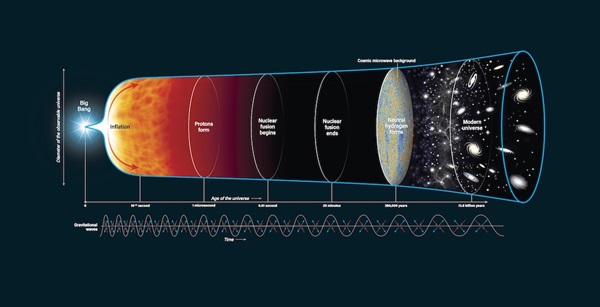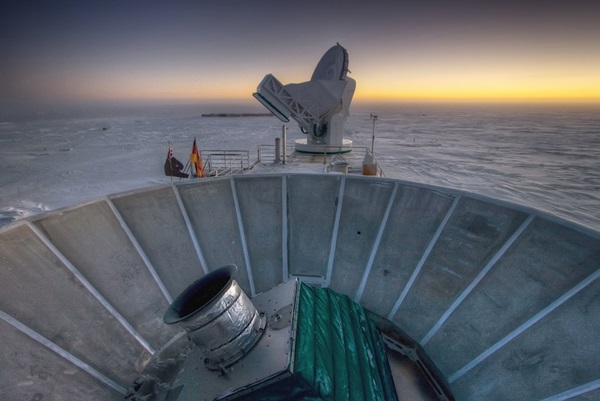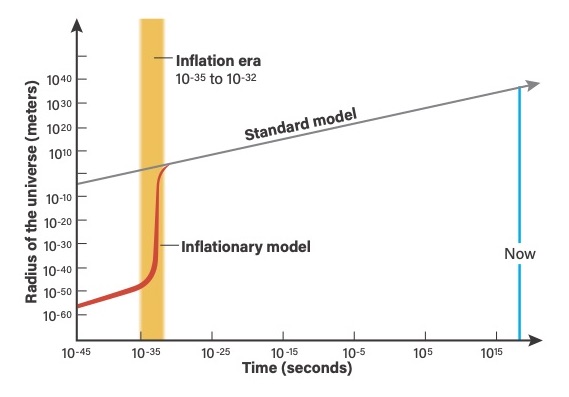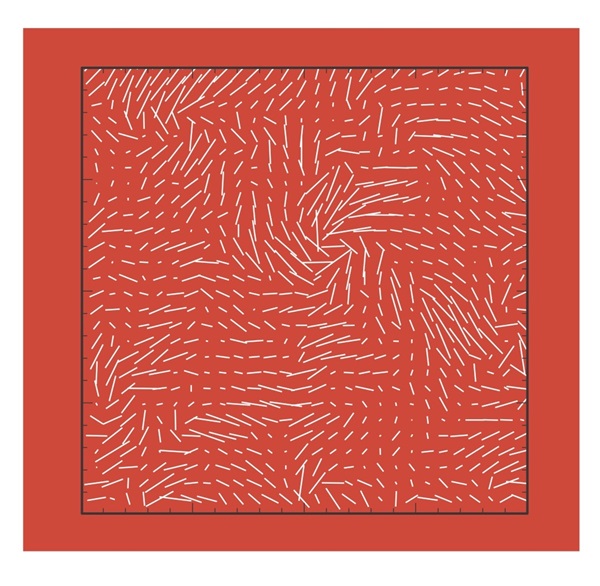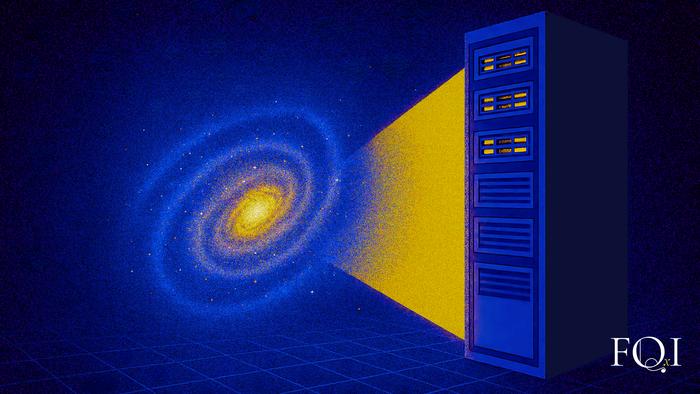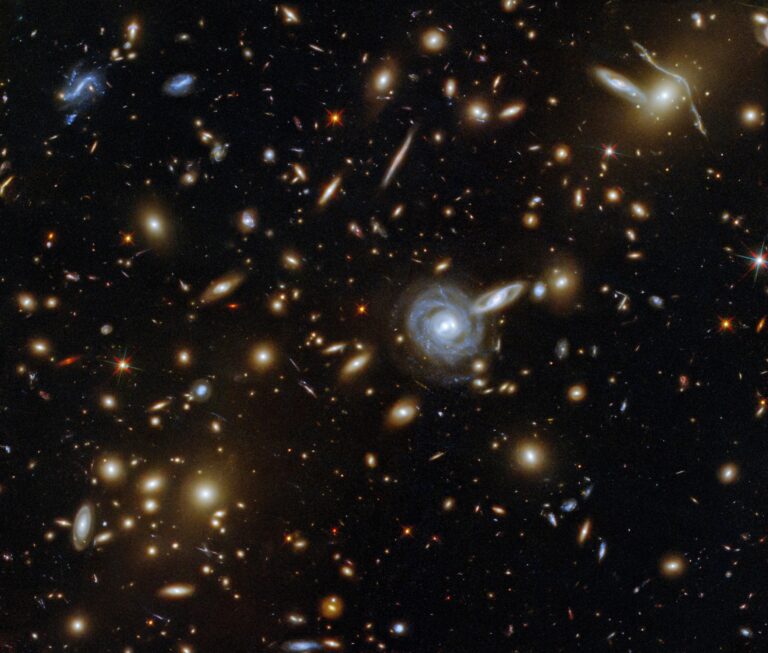Key Takeaways:
- Inflation is a theoretical model proposed to address inconsistencies within the Big Bang theory, such as the universe's flatness and the horizon problem, by positing a period of extremely rapid expansion before Big Bang nucleosynthesis (BBN).
- Inflation predicts the generation of primordial gravitational waves, which would leave a detectable imprint, specifically B-mode polarization, in the cosmic microwave background (CMB) radiation.
- While several experiments have searched for these B-modes as evidence of inflation, definitive detection remains elusive, leaving the theory's confirmation unachieved.
- Ongoing and future CMB experiments aim to either detect these B-modes, thereby supporting inflation, or significantly constrain the range of viable inflationary models, potentially leading to alternative theories.
This story comes from our special January 2021 issue, “The Beginning and the End of the Universe.” Click here to purchase the full issue.
Cosmologists are confident the Big Bang accurately describes the universe we see today. But they are less sure of what came before.
Stephen Hawking considered this inquiry pointless, like asking “What’s south of the South Pole?” While often conflated, the Big Bang and the origin of time are distinct epochs. But what happened before the Big Bang may have laid the foundations for what came after.
The Big Bang theory describes the era starting when the lightest elements were formed — called Big Bang nucleosynthesis (BBN; see “The emergence of matter,” page 18) — until today, where distant objects are receding at great velocities. BBN is currently the last epoch of certainty, the final stage in reverse cosmic history where the underlying forces of nature were similar to physics accessible to modern-day particle accelerators.
Beyond BBN lies speculation. The most popular model for what preceded it is inflation. Alan Guth, who began developing the theory in 1979, wrote in his book The Inflationary Universe that “the standard Big Bang theory says nothing about what banged, why it banged, or what happened before it banged. The inflationary universe is a theory of the ‘bang’ of the Big Bang.”
Ironing out the details
The Big Bang wasn’t without its contrivances. As far back as the 1940s, cosmologists recognized serious flaws in the theory’s narrative. Furthermore, no one knew what had caused the Big Bang to begin its prodigious expansion. By the 1970s, several fissures had emerged, calling the accuracy of the Big Bang into question.
One was the universe’s spatial curvature — a measure of how initially parallel beams of light diverge as they propagate. Our universe is approximately “flat,” meaning that the rules you learned in geometry class, such as parallel lines never meet, apply everywhere. This is fortuitous: You might not be reading this if the curvature were otherwise.
Anthropic arguments like these — with no apparent explanation except that otherwise we would not exist to observe the conditions they bring about — are anathema to cosmologists. Guth was inspired to devise a mechanism that forced flatness on the universe. He began developing the inflationary universe paradigm in 1979, ultimately publishing it in Physical Review D in 1981.
The paper states that cosmic inflation expanded space-time by a factor of 1030 over approximately a trillionth of a trillionth of a trillionth of a second. Seconds later, BBN begins, followed by the more familiar Hubble expansion. Inflation puts the “bang” in the Big Bang, courtesy of a strange substance: a field called the inflaton, which acts as a source of antigravity, and propels the universe’s exponential, accelerated expansion — albeit only briefly.
Guth’s paper also explained the astonishing uniformity of the universe. Observations show that far-flung regions of the cosmos have nearly identical amounts of CMB radiation. In the standard Big Bang scenario, disparate regions had never been close enough to one another for their temperatures to equilibrate. This troubling observation was known as the horizon problem. Inflation solved it by allowing for widely separated regions of the universe to have previously been in contact, reaching a single temperature in a much smaller universe prior to inflationary expansion.
But Guth’s model wasn’t flawless. It failed to account for how inflation started … or ended. It also lacked a way for structures such as galaxy clusters to form — how could clumps of matter arise after inflation’s prodigious flattening? Fortunately, soon after Guth’s paper was published, theorists such as Paul Steinhardt, Stephen Hawking, Andrei Linde, and others rectified technical problems in Guth’s model. Their solutions included the idea that unavoidable quantum jitters of the inflaton field caused the universe’s expansion to vary depending on location. These jitters would result in fluctuations in the universe’s matter density, leading to regions where dark matter and ordinary matter clump together to (much later) seed galaxies. Such fluctuations were observed in the CMB in 1992 by the Cosmic Background Explorer (COBE) satellite.
Elusive evidence
With such a successful string of consistent claims, inflation should be widely accepted by all practicing cosmologists, right? Not entirely. There are other models, aside from inflation, that predict the same jitters that would lead to the large-scale structures observed today.
But inflation’s most significant shortcoming is failing to explain how it got started. Even Guth only considered its consequences, assuming inflation was somehow initiated. This led some critics to claim that inflation and its consequences aren’t testable, which is a major requirement of the scientific method. What is needed is a way to test the unique predictions inflation makes, allowing cosmologists to differentiate between a universe in which inflation took place and alternate theories.
By the early 1990s, cosmologists had found just such a “smoking gun” of inflation. They showed that, if inflation took place, it would inevitably result in primordial gravitational waves. These waves propagate at light-speed, endure forever, and pervade all matter, making them unique messengers of the inflationary epoch. They are the ideal evidence of inflation — if such waves could be detected. If measured, these waves could reveal information about the inflationary epoch much the same way that photons, massless messengers themselves, encode the properties of the cosmos 380,000 years after BBN.
In the early 1980s, Russian physicist Alex Polnarev predicted these gravitational waves would distort space-time in a way that induces specific patterns in the light of the CMB. These patterns in the light’s orientation, or polarization, were later called B-modes and their properties fully elucidated by other researchers in the late 1990s. If detected, B-modes would confirm inflation beyond a reasonable doubt. By 2001, my experimental colleagues and I decided to test whether we could detect these inflationary relics.
Detecting gravitational waves via their imprint on the CMB’s polarization would falsify alternatives to inflation, cementing it once and for all as cosmology’s touchstone. But our apparent detection of B-mode polarization using the Background Imaging of Cosmic Extragalactic Polarization, or BICEP2, instrument in 2014 was later retracted. Definitive evidence remains elusive.
The search continues
Inflation is consistent with many pieces of cosmological data, but consistency doesn’t constitute proof. Several upcoming CMB experiments hope to change that. They include the Simons Observatory, the BICEP Array, and the “Stage-4” CMB-S4 experiment. These efforts will either detect primordial B-mode polarization arising from inflation-generated gravitational waves or drastically winnow the allowable number of inflationary models.
Nevertheless, B-mode detection is not guaranteed. Or inflation may not have happened at all. Frustratingly, many alternatives to inflation are similarly difficult to prove. So, unless the B-modes signals potentially awaiting astronomers are sufficiently big, we might never be able to say for sure whether the universe underwent inflation or not.
To some cosmologists, that would be deflating news. To others, it would fascinate and inspire — impelling us to create more refined models of our cosmic origins.
Brian Keating is a professor at the University of California San Diego, and principal investigator of the Simons Observatory. His book, Losing the Nobel Prize (W.W. Norton & Company, 2018), tells the story of the 2014 claim of finding the fingerprints of inflation.

